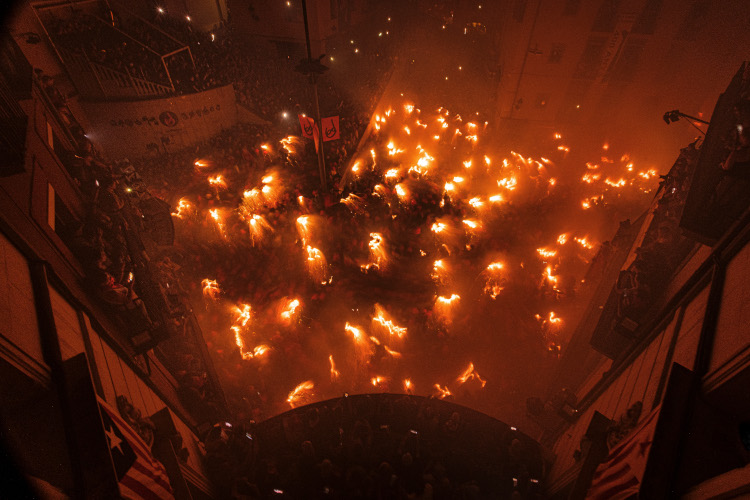Fire and revelry take over Berga square for central day of La Patum festivity
Demons group marks 400th anniversary with firecrackers on tails and heads

Berga's Sant Pere square witnessed the central day of the town's emblematic La Patum festivity on Thursday night with a mix of fire and revelry that took over the place for the first time in three years, due to the two-year Covid hiatus.
After beginning with a bang on Wednesday with a parade across the northern Catalan town, action focused on the square on Thursday for the 'salt de plens', that is, a performance of some 200 people dressed up as demons that jump at once firing around a thousand firecrackers.
This is the apotheosis of La Patum's five days, and the moment is also repeated on Sunday.
Yet, this year, the climax of the festivity had even more remarkable elements, not only because it was the first time since 2019 that took place, but also because several groups celebrate their 400th anniversary in this edition, including Vestidors de Plens i Maces.
In order to mark the milestone, they exceptionally featured in the 'salt de plens' with firecrackers on both their tails and their heads for the first time since 2006.
According to the group leader, Joan Sala, the performance aimed to go "back to the past," since the old 'salt de plens' used to resemble what was witnessed on Thursday night.
Also, in a rare move they also decided to hold one minute of this unique tradition without music so that residents "become aware of the treasure" they have.
Recognized by UNESCO as Intangible Cultural Heritage
And, indeed, it is such a treasure. Berga's La Patum has medieval roots dating back at least 600 years.
Such remarkable history and the fact that it is still going on nowadays explains why in 2005 UNESCO included La Patum in its list of Intangible Cultural Heritage, featuring traditions and other intangible treasures of humankind worldwide.
The UN specialized agency praised its uniqueness and artistic and historical value, and not many such festivals can boast such recognition since La Patum was the first in Catalonia to get it – 'castellers' human towers and the Pyrenees' 'falles' were to follow a few years later.